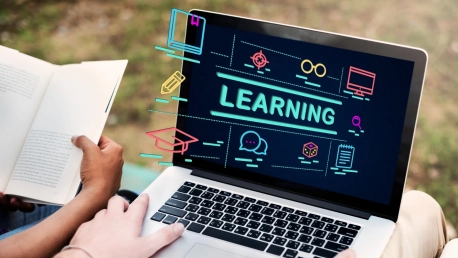Learning and development (L&D) proves crucial in educational growth and career advancement, presenting opportunities for transformation. However, it’s marred by a significant deficiency: the neglect of full accessibility for those with disabilities. From my significant involvement in L&D, the depth of the obstacles faced by individuals with disabilities has become clear, a realization sharpened by my own encounters with temporary disabilities. These experiences shed light on the persistent struggles for disabled persons within learning environments, highlighting the urgent need for inclusivity. Establishing equal learning opportunities is not just a compliance mandate, but an ethical imperative to ensure personal and professional growth is attainable for all, regardless of physical or mental barriers. This pursuit of accessibility is more than an adjustment of physical spaces and materials—it requires a cultural shift in recognizing and valuing the vast potential of every individual, making the right to learn universally achievable.
The Epiphany from Personal Struggle to Universal Challenge
When I lost my voice on the eve of a crucial conference, I was coerced to embrace text-to-speech technology to communicate my ideas. This predicament offered an unfiltered glimpse into the everyday realities of individuals with speech impairments who depend on technology to give voice to their thoughts. The empathy derived from this experience was profound and shifted my perspective, compelling me to extrapolate my short-lived difficulties into advocating for permanent solutions in the L&D industry.Recovering from surgery, I was confined to my home, compelled to lean heavily on digital mediums for connection and productivity. Accessibility suddenly transformed from a concept into an intimate reality. It dawned on me that these temporary inconveniences were but a faint echo of the daily challenges faced by many individuals. These experiences triggered a fundamental realization: my short-term disability experiences reflected a fraction of the challenges encountered by those with long-term accessibility needs.
Tackling L&D Accessibility from the Outset
The default approach in many L&D initiatives is to design for the mainstream, leaving accessibility concerns to be addressed as an afterthought or upon specific requests. The aesthetic allure and ease of consumption frequently eclipse the essential aspect of accessibility in content creation. This exclusionary practice inherently marginalizes learners with disabilities, isolating them from opportunities that should be universally available.Accessibility is not a feature to be patched into L&D content retrofitting; it must be a foundational blueprint from the onset of the creation process. Employing guidelines such as the WCAG is not merely a box-checking exercise, but a crucial framework to ensure inclusivity for all learners. Irrespective of disability, L&D content should be universally designed to be perceivable, operable, understandable, and robust.
A Call for Inclusive Design and Delivery
Small but significant adjustments to how we design and deliver learning content can make learning more inclusive. By establishing clear learning agendas, we can assist learners with ADHD in navigating course material with greater ease. Employing tools to check for color contrast benefits those with color vision deficiencies. The use of plain English not only assists non-native speakers but also those with cognitive disabilities. And embracing a hybrid approach to events answers the call of inclusivity for those who are physically unable to attend in person.Accessibility in L&D should be seen not as extra labor but as an ethical imperative—an integral part of the moral compass guiding content creators. When we design with everyone in mind we foster an environment that allows for a multitude of access needs, whether due to physical, neurological, or language barriers. Inclusivity is not an additional feature—it is the essence of fair and equal education and development.
Leveraging Technology for Inclusivity
Leveraging technology can significantly enhance accessibility and inclusivity in Learning and Development (L&D). Drawing inspiration from the seamless shopping experiences of brands like John Lewis, it is possible to integrate accessibility smoothly into user interfaces. For L&D, technology should not just beautify the learning process but equalize it.Utilizing and evolving the digital resources available, we are capable of creating educational settings that are open to everyone, irrespective of physical or cognitive differences. Here, technology acts not as a hindrance but as a connector to an L&D realm where inclusivity is paramount, and the journey of learning is open to all. This approach ensures that learning environments are tailored to meet diverse needs, facilitating a universally accessible learning pathway.By prioritizing this, the L&D sector can both elevate the quality of learning and ensure it is equitable for all participants. This vision of L&D underscores the potential to transform educational technology into a tool for democratizing learning opportunities across varied populations.
Advocating for Change in the L&D Industry
The L&D sector is on the verge of a crucial evolution, one that mandates a paradigm shift towards prioritizing accessibility. Traditionally viewed as a peripheral issue, accessibility needs to be repositioned as the cornerstone of our strategies across all stages of learning and development – from initial design to delivery. This approach should embody our collective goal of fostering a learning environment that is truly inclusive.Embracing inclusivity in L&D is not an aspirational goal, but a practical necessity. It is critical that we remain unwavering in our efforts to cultivate an L&D space where exclusion has no place. It is imperative for us to work in unison towards a future where the concept of learning transforms from a selective advantage to an inherently inclusive right, available to everyone without barriers. Our ambition should be to create a legacy where every learner, irrespective of their starting point, is given an equal opportunity to thrive and succeed.









